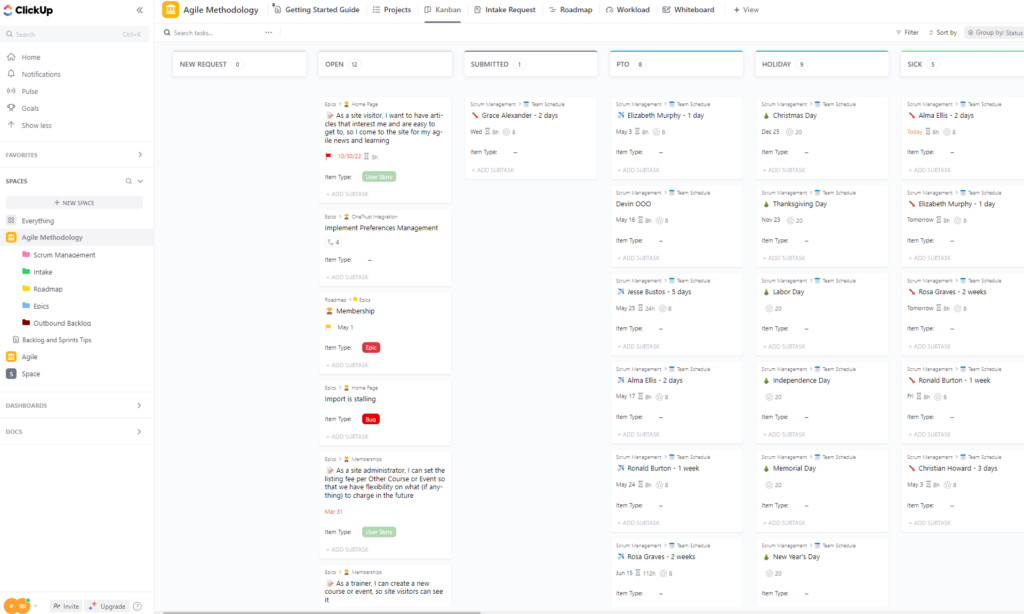
Agile project management has grown in popularity in recent years. In fact, at least 71% of U.S. companies1 use agile planning methods to map out their projects. It should be no surprise that companies are finding success by utilizing the best project management software and adopting agile approaches.
If you want to increase project success but aren’t sure what agile is, you’re in the right place. In this guide, we’ll break down agile planning and explain the stages of the agile process. We’ll explain the difference between traditional planning and agile planning, discuss the key components of agile and cover what the agile manifesto says about planning. Let’s jump in.
Definition: What Is Agile Planning?
Traditional project management methodologies like waterfall use project plans that are set in stone. However, agile planning — which is generally (but not always) used for software development projects — enables project teams to formulate a plan of attack for upcoming projects while also allowing room for changes as the projects progress.
Methods & Techniques in Agile Planning
Below, we’ll examine several popular agile planning methods in more detail so you can better understand how each method works.
What Is PI Planning in Agile?
Project increment (PI) planning in agile relates specifically to a version of planning used in the SAFe method, which is a type of scaled agile. PI planning is similar to sprint planning in the scrum framework. In SAFe, agile release trains (a large team comprising many small scrum teams) use PI to plan large-scale sprints that last between eight and 12 weeks.
What Is Sprint Planning in Agile?
Sprints are a key component of scrum. Sprints are time-boxed events that last one to four weeks. During a sprint planning meeting, the product owner and the development team create user stories (tasks) to work on, and create definition of ready (DoR) and definition of done (DoD) strategies to ensure that the items being worked on are in the best shape possible.
What Is Capacity Planning in Agile?
Capacity planning is a popular method that many agile teams use. Thanks to the reports that many of the best agile tools provide, project managers, scrum masters and product owners can see how much work their team has been able to finish (known as team velocity) in time-boxed events.
What Is Adaptive Planning in Agile?
Project leaders who embrace adaptive planning can quickly change the team’s direction to meet new requirements and goals that stakeholders and clients set and request. Adaptive planning is flexible, welcomes feedback and is the backbone of agile methodologies and frameworks.
What Are the Stages in the Agile Planning Process?
The stages of agile projects can vary depending on the framework and technique you use to lead your team. Below, we’ll examine the popular agile planning onion technique.
Agile Planning Onion
The agile planning onion is a project visualization tool that can help project managers navigate through six planning stages: strategy, portfolio, product, release, iteration and daily. Each layer of the onion relates to a portion of agile planning.
Strategy
The onion’s outer layer represents the overall strategy that agile project managers want to use and the project’s goals. During this stage, senior leaders, stakeholders and clients create a project charter (project scope) that defines the vision. Project resources and ways to reach project objectives are also discussed.
Portfolio
During the portfolio part of the onion process, project leaders manage their portfolio of projects and discuss prioritization, resource allocation and how the project visions align with business objectives. Project roadmaps are also developed.
Product
When teams reach the product layer, the senior leaders decide on which software development approach to use, and timelines, due dates and themes are set. Feature priorities are also finalized.
Release
Teams hold release planning discussions to decide how many sprints or time-boxed events there will be, determine which product features (user stories) will be included in each sprint and set team velocities (capacities).
Iteration
The fifth layer, iteration (sprint planning), is when the product owner and development team meet to discuss and define the definitions of ready and done, as well as the acceptance criteria. In addition, teams assign story points to each task or use other agile estimation techniques to determine how complex a user story is. Delegation poker can also be used to assign tasks.
Daily
The innermost layer, daily, represents the daily meetings during which teams discuss the project, the tasks they’re working on and any issues or successes they’re experiencing. Daily meetings are one of the most critical agile project management practices, as they help teams stay focused on the project.
The original content of the note was published on Cloudwars.net. To read the full note visit here